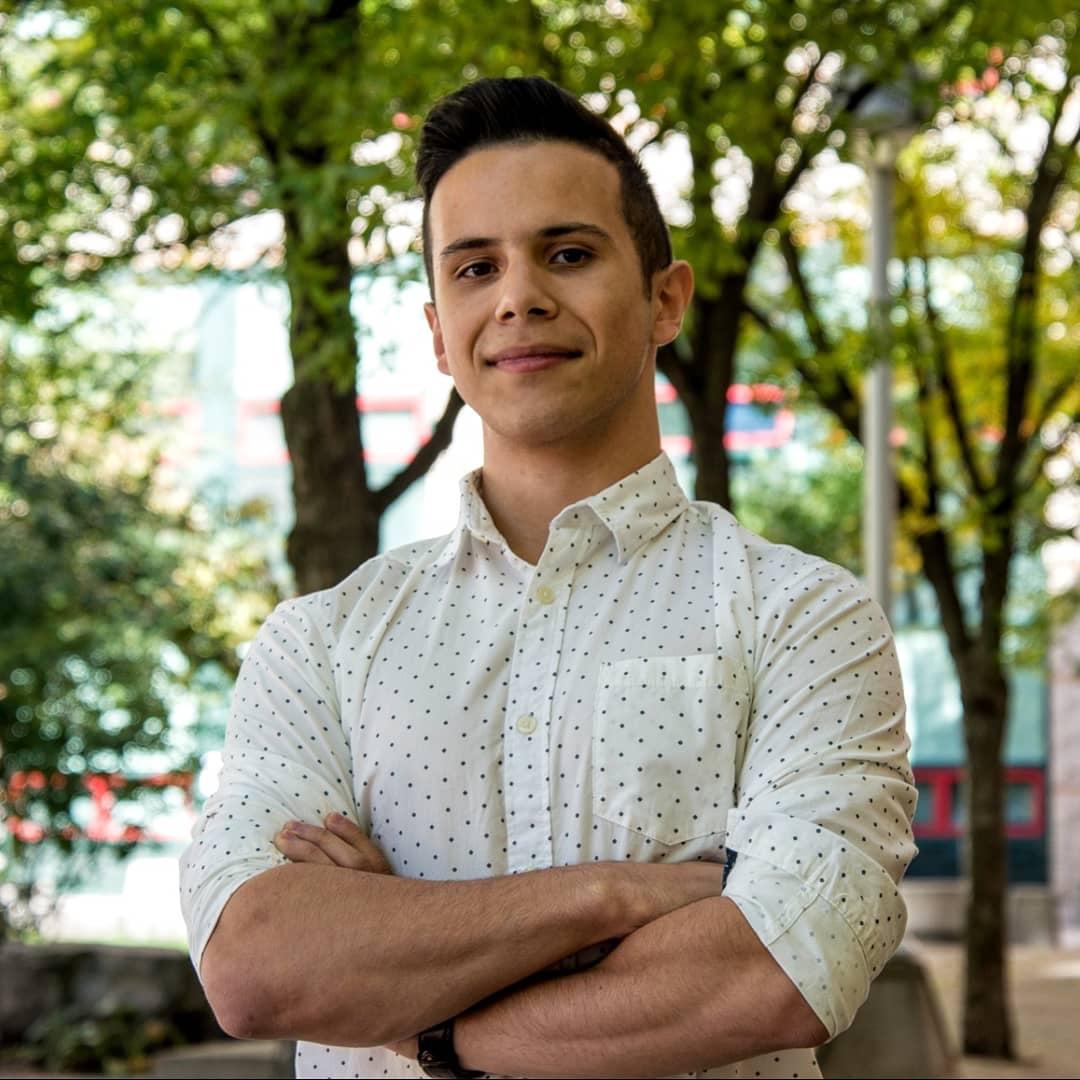On July 2, 2001, the Philadelphia Flyers made a trade that would shift the trajectory of the franchise for decades to come. This trade sent Daymond Langkow to the Phoenix Coyotes in exchange for a first-round pick in the 2003 NHL Entry Draft, and a second-round pick in the 2002 NHL Entry Draft.
At the time, a 25-year-old centreman, Langkow had spent three seasons with the Flyers and had played well for the team, anchoring their second line. Through 209 games in the orange and black, he put up a respectable 127 points and earned himself a reputation for playing a very sound two-way game.
What Langkow Brought to the Coyotes
Joining the Coyotes for the 2001-02 season, Langkow was tasked with greater responsibilities than he’d had in Philadelphia. This new group didn’t have the same offensive talent as his previous team, who were among the highest-scoring in the NHL the year prior. The Coyotes lacked top-caliber offensive talents and didn’t have a clear-cut No. 1 center, thus Langkow was given the opportunity to center the team’s first line.
While his time with the Coyotes — a three-year stint — wasn’t especially long-lived, Langkow did manage to make an immediate impact with his new team. He started the season hot with three points in his first two games of the season and continued to heat up. Through his first 27 games in the desert, he had scored 14 goals and picked up 18 assists, boasting an impressive 1.19 points per game. His torrid offensive pace slowed over the remainder of the season, but Langkow did still post respectable numbers. He finished his first campaign with the Coyotes as the team’s leading scorer, with his 27 goals and 62 points being career highs. In addition to having the best offensive season of his career to that point, his two-way play was not to be overlooked, earning him Selke Trophy votes as one of the best defensive forwards in the league.
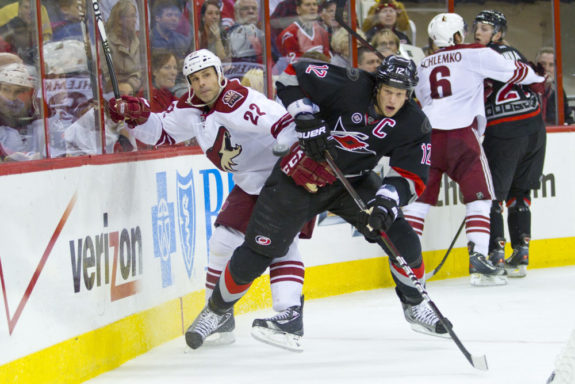
Langkow spent two more seasons with the Coyotes and while he wouldn’t reach the same offensive highs as he had in his first season, he managed consecutive 52-point seasons and maintained his solid defensive play. The two-way forward was a workhorse, averaging the most ice time on his team among forwards through all three seasons with the Coyotes, and while he may not have been the ideal choice to be a top-line center, he filled the role as best he could.
After the 2003-04 season, the Coyotes parted ways with Langkow, sending him to the Calgary Flames. In return, they acquired defenceman Denis Gauthier and winger Oleg Saprykin, neither of which would play more than two seasons with their new team. Langkow, on the other hand, spent six seasons with the Flames, playing in nearly 400 games and scoring just under 300 points.
His time with the Coyotes seemingly left a lasting impression on Langkow, who returned to the team in a depth role for a swan song 2011-12 season. In his final season, he put up 30 points in 73 games and helped the team make their deepest playoff run in franchise history before falling to the eventual Stanley Cup champion Los Angeles Kings.
Examining the Daymond Langkow Trade Tree
Trading a top-six forward for draft picks sounds fairly straightforward at face value. However, once you dive into the Langkow trade tree and follow the assets involved, it’s clear to see the butterfly effect that this trade has had on the Flyers organization and around the NHL.

In return for Langkow, the Flyers received a second-round pick in the 2002 NHL Draft, and a first-rounder the following year. The first-round pick would end up being the 11th-overall pick in what is arguably the strongest draft class of all-time. Among the multitude of future All Stars that would start their NHL journeys with the 2003 Entry Draft were Marc-Andre Fleury, Ryan Getzlaf, Shea Weber, and the Flyers’ 11th-overall selection, Jeff Carter.
The Flyers Draft Jeff Carter
Carter made his NHL debut during a time of transition for the Flyers. Captains were named and shipped out in three consecutive seasons, with Derian Hatcher, Peter Forsberg, and Jason Smith all being bestowed with the captaincy before departing at season’s end. The Flyers’ old guard was on its way out, with new blood moving in, in the form of Carter, future captain Mike Richards, and Daniel Briere, among others. This new guard ushered in a new era of Flyers’ hockey, one that culminated in an unforgettable run to the Stanley Cup Final in 2010.

A bona fide sniper, Carter was electrifying for the Flyers and was a threat to score each and every time he stepped out onto the ice. Always an exciting player to watch, it was a tough pill for fans to swallow when he was eventually traded to the Columbus Blue Jackets. Even though the Flyers ultimately got a fantastic return for the dynamic sniper, it was still difficult to see a player of his caliber leave the team in the midst of his prime, only to win elsewhere. Now, a decade later, he is still the most recent Flyer to eclipse the 40-goal mark, scoring 46 in 2008-09.
The Flyers Add Jakub Voracek, Sean Couturier, and Nick Cousins
While the Flyers have yet to find a sniper of Carter’s pedigree, they did manage to pick up two key pieces of their core in the trade that sent him to the Blue Jackets. In exchange for Carter, the Flyers acquired Jakub Voracek, a first-round pick, and a third-round pick. These two draft picks would be used to select Sean Couturier, 14th overall, and Nick Cousins, respectively.
| Flyers Acquire | Blue Jackets Acquire |
| Jakub Voracek | Jeff Carter |
| 2011 First-Round Pick (Sean Couturier) | |
| 2011 Third-Round Pick (Nick Cousins) |
At the time of the trade, Voracek was four years removed from being drafted seventh overall, but had struggled to hit his stride. With the Flyers, he lived up to his potential, producing at a near point-per-game pace in his second season with the team, and from there on, he wouldn’t look back. He was named to the NHL’s First-All Star team for the 2014-15 season, and became a key producer, racking up 60 or more points in each full season he played.
The other major piece that the Flyers procured through the Carter trade, is their current No. 1 center, Couturier. Drafted 14th overall in 2011, he was touted early on as an extremely talented two-way forward with a knack for scoring. The reigning Selke Trophy winner proved the prior claim to be true early on, playing solid defensively after making the NHL squad out of training camp. By the time playoffs rolled around, he was lining up against, and frustrating, star players like Evgeni Malkin. (from ‘Inside the Flyers: So far, Couturier getting best of Malkin,’ The Philadelphia Inquirer, 18/04/2012)
It took a handful of seasons for the offensive touch that he showcased in juniors to show up at the NHL level, but at age 25 he took off, picking up 76 points, breaking the 30-goal mark for the first time in his career. Since then, he has continued to score at a first-line pace, while perennially holding a spot as one of the best defensive forwards in the league.

The third and final piece in this trade is one that is often forgotten. Cousins was selected with the third-round pick that the Blue Jackets sent to the Flyers. Cousins was never a top-talent in the orange and black, but he was a solid role player who played hard and wasn’t afraid to get his hands dirty. He played 107 games with the team before being traded to the Coyotes with youngster Merrick Madsen, in exchange for prospect Brendan Warren and a fifth-round pick, which was used to select defender Wyatt Wylie.
Neither player acquired in the Cousins trade has suited up for the Flyers, and while there’s still plenty of hope for Wylie to get a shot, Warren was never signed to an entry-level contract and is no longer with the club.
The Flyers Trade for the 4th-Overall Pick and Select Joni Pitkanen
Unlike the first-round pick that was used to select Carter; the Flyers never used the second-round pick acquired in the Langkow deal, shipping it out to the Tampa Bay Lightning with another second-rounder, and winger Ruslan Fedotenko in exchange for the fourth-overall pick in the 2002 Draft. The Lightning chose not to use the second-round pick either, sending it to the San Jose Sharks who would select Dan Spang, who never played an NHL game.
The fourth-overall pick that the Flyers received from the Lightning was used to select Joni Pitkanen, an offensively gifted Finnish defender. In his first NHL campaign, he put up 27 points in 71 games, good for the second-most by a rookie defender that year. He continued to showcase his offensive talents, leading Flyers defenders in scoring in each of his next two seasons.
| Flyers Acquire | Lightning Acquire |
| 2002 First-Round Pick (Joni Pitkanen) | Ruslan Fedotenko |
| 2002 Second-Round Pick (Dan Spang) | |
| 2002 Second-Round Pick (Tobias Stephan) |
While the second-round pick acquired in the Langkow trade wasn’t the primary piece in the deal with the Lightning, it was certainly key to completing the trade that would allow the Flyers to select the dynamic defender.
Unfortunately, Pitkanen was hampered by injuries in his time with the team and through the majority of his career. After three seasons with the Flyers, he was shipped out to the Edmonton Oilers along with a third-round pick and depth forward Geoff Sanderson, in exchange for stay-at-home defenceman Jason Smith, and young winger Joffrey Lupul.
The Flyers Add Veteran Leadership and a Young Offensive Touch
Smith played only one season in Philadelphia but made a tremendous impact on a young team that had finished last in the NHL the season prior. Over his 16-year career to that point, he’d garnered a reputation for being a fierce leader and was thus named the Flyers’ captain before suiting up in the orange and black for the first time. He served as a transitional captain for the team, mentoring a young Richards who was handed the captaincy torch the following year. Led by Smith, the Flyers climbed out of the basement and finished sixth in the Eastern Conference. The team made a run to the conference finals and while they were unable to topple the Sidney Crosby-led Pittsburgh Penguins, the deep run was a valuable experience that would be key to the team’s Cup run two seasons later.
| Flyers Acquire | Oilers Acquire |
| Jason Smith | Joni Pitkanen |
| Joffrey Lupul | Geoff Sanderson |
| 2009 Third-Round Pick (Cameron Abney) |
The Flyers’ captain would leave the team in free agency at the conclusion of the 2007-08 season, signing with the Ottawa Senators for what was the final campaign of his career. Smith led by example, teaching a young Flyers team how to play the game the right way. He put his body on the line, playing through a 17-game playoff run with two separated shoulders without complaint, despite knowing that the chances of him being re-signed were slim. (from ‘Sam Donnellon: Flyers captain Smith showed his toughness during playoffs,’ The Philadelphia Inquirer, 21/05/2008)
The other player that came back to the Flyers in the deal that sent Pitkanen to the Oilers was Lupul, a dynamic young forward. He had come into the league just three years earlier with the Anaheim Mighty Ducks. He showcased his offensive acumen in his sophomore campaign, tallying 28 goals and 53 points. He was then shipped out of Anaheim to the Oilers as a piece in a blockbuster deal that saw Chris Pronger coming back the other way.
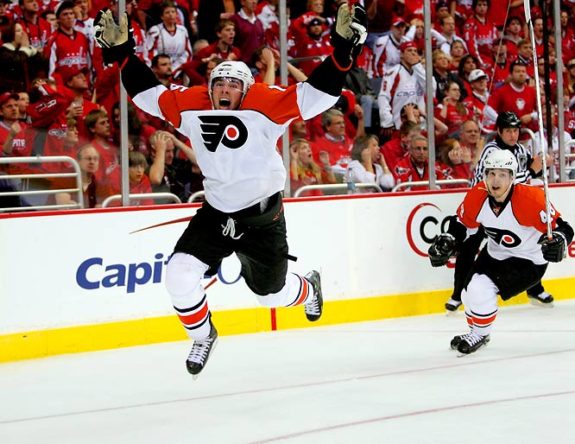
His only season with the Oilers was nothing short of disastrous. He scored only 28 points through 81 games and posted a horrid minus-29 rating. A change of scenery was deemed the best solution, so Lupul joined the Flyers where he’d bounce back, putting up 45 goals and 96 points over two seasons with his new team. Like Smith, he was also a huge key to the team’s conference finals run, scoring a massive goal in overtime of game seven in the Flyers first-round matchup against the Washington Capitals.
At the conclusion of his second season with the Flyers, Lupul was shipped back to the Ducks in another blockbuster deal centered around future Hall of Famer, Chris Pronger. Traded alongside him were two first-round picks, ultimately used to select John Moore and Emerson Etem, and future considerations. In his second stint with the Ducks, Lupul was hit hard by the injury bug and only ended up playing 49 games for them across two seasons.
The Flyers Add a Future Hall of Famer
Pronger was exactly what the Flyers needed when they acquired him in the summer of 2009. The big-bodied defender was still among the best players in the league, despite being 35 years old, and the impact he had on the team was tremendous. In his first and only full season with the team, he put up 55 points, finished top five in Norris Trophy voting, earned Hart Trophy votes, and led the Flyers to the Stanley Cup Final.
| Flyers Acquire | Ducks Acquire |
| Chris Pronger | Joffrey Lupul |
| Ryan Dingle | Luca Sbisa |
| 2009 First-Round Pick (John Moore) | |
| 2010 First-Round Pick (Emerson Etem) |
Unfortunately, Pronger’s term with the Flyers was short-lived. Due to lingering effects of head and eye injuries, he played only 63 games over what would be the last two seasons of his career. In spite of having these two seasons cut short by injury, he still managed to put his talent on full display, finishing top-10 in Norris Trophy voting despite only playing in 50 games. In his final season, he operated at a near point-per-game pace, with 12 points in the last 13 games of his career.
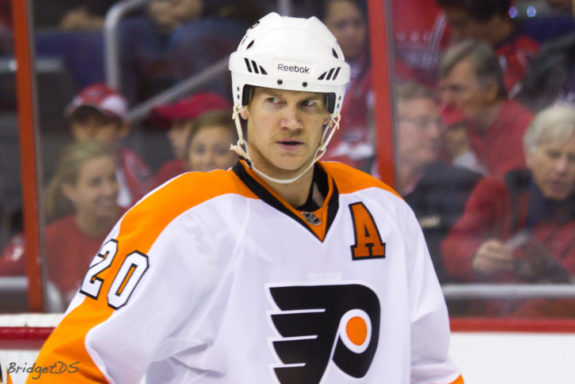
Pronger’s on-ice leadership and immense talent were sorely missed, and nearly a decade later, the Flyers still haven’t found another defender to fill the hole that he left. To this day, fans still theorize that if he hadn’t suffered through unfortunate injuries, he may have been able to lead the Flyers to their first Stanley Cup since 1975.
Things Start to Get Weird
By the time the 2014-15 season rolled around, it was no secret that Pronger would never play again. He’d already taken a job with the NHL’s Department of Player Safety, had served as a scout for the Flyers organization, and would soon be named as a Hockey Hall of Fame inductee. Despite this, he still carried a cap hit of approximately $4.9 million until 2016-17. Placing him on long-term injured reserve made things manageable, but still complicated things for the Flyers who were perpetually tight to the salary cap ceiling.
The Coyotes on the other hand were in the opposite position and looking to reach the cap floor. Pronger’s contract was the perfect storm for them. Most of the actual salary had been paid in the first five years of his contract, leaving only $575,000 in each of the final two years of the deal. The Coyotes traded for Pronger’s contract, alongside stay-at-home defender Nicklas Grossmann in exchange for Sam Gagner and a fourth-round pick.
| Flyers Acquire | Coyotes Acquire |
| Sam Gagner | Chris Pronger |
| 2016 Fourth-Round Pick (Otto Koivula) | Nicklas Grossmann (50% Salary Retained) |
Gagner played one season for the Flyers in a depth role, putting up 16 points in 53 games. He left as an unrestricted free agent, signing with the Blue Jackets where he had a career year.
Here’s where things get a little confusing. The fourth-round pick acquired in the deal was swapped with the New York Islanders for their fourth-round pick. This Islanders’ fourth was then sent to the Coyotes along with a second-, third-, and fourth-round pick in exchange for a higher second-round pick. The final piece of this game of draft-pick hot potato would be used to select Isaac Ratcliffe who now plays for the Flyers’ AHL affiliate, Lehigh Valley Phantoms.
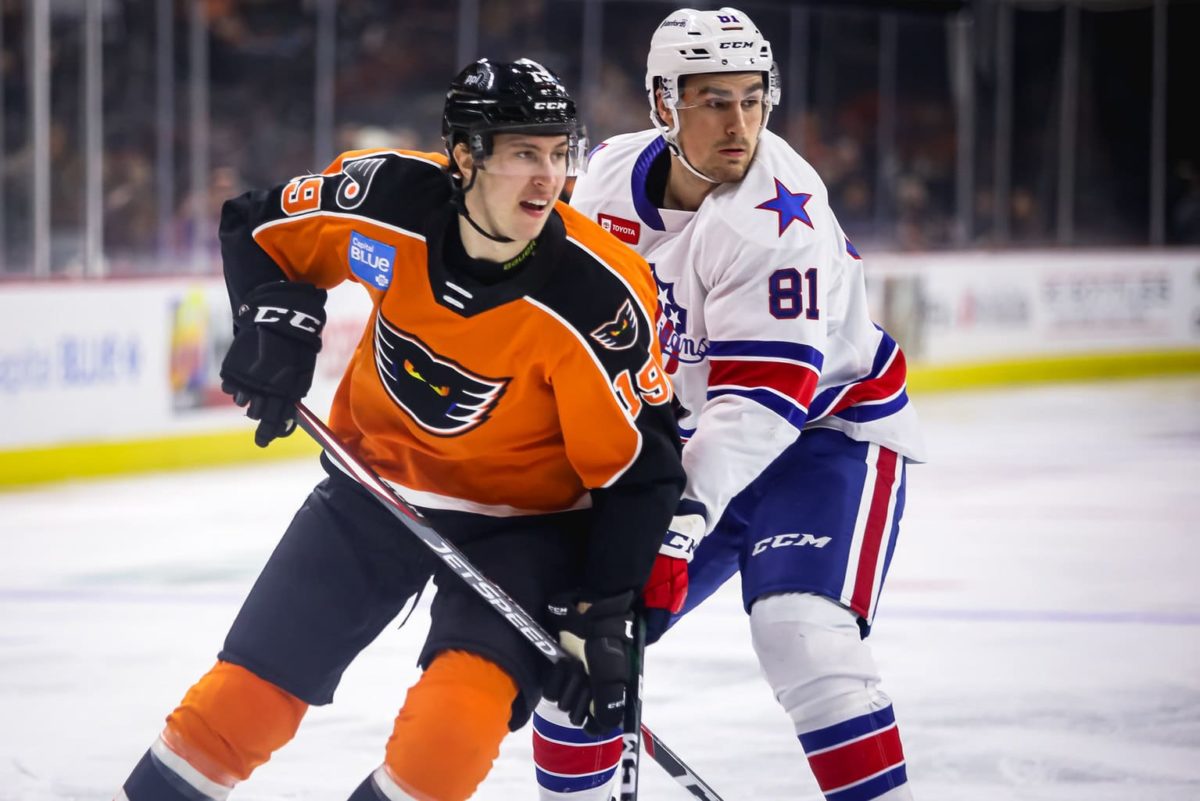
Ratcliffe, a big-bodied and gritty winger will get the chance to showcase his talents at training camp next season. With the way the current season has gone, there will likely be some turnover within the Flyers’ roster. Some fresh young faces should find their way onto next season’s squad, and Ratcliffe may be one of them.
Future Implications
Looking back, it’s bizarrely wonderful how a seemingly run-of-the-mill trade in 2001 has had such a lasting and sprawling impact on the Flyers.
With players such as Carter, Pronger, Couturier, and Voracek making their way to the team because a second-line forward was sent to the Coyotes for a couple of draft picks, the Langkow deal has had a tremendous effect on the team, shaping two decades of Flyers hockey.
Now that the 2020-21 NHL season is winding down, I’m left to wonder what the future implications of this two-decade-old trade will be. There are still four players in the Flyers organization that made their way to the team as an indirect result of the Langkow trade, meaning that this epic trade tree still has the opportunity to grow.
What the future holds for Couturier, Voracek, Wylie, and Ratcliffe, as well as the Langkow trade tree, remains to be seen.
Hey everyone, I’m Chris! I’m a Ryerson University alum and a huge sports fan. I love to spend my time combing through hockey history and it’s current events, looking for interesting and unique stories to tell.
I cover the Philadelphia Flyers for THW and strive to tell compelling stories and provide unique perspectives on the team!
